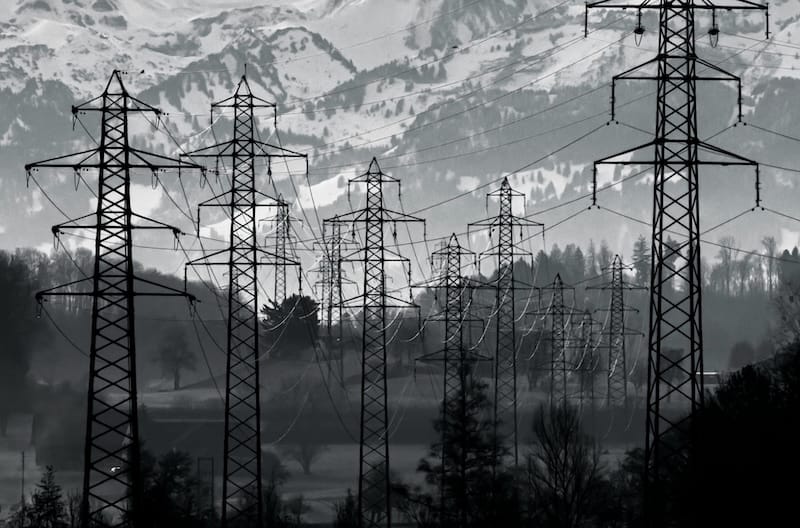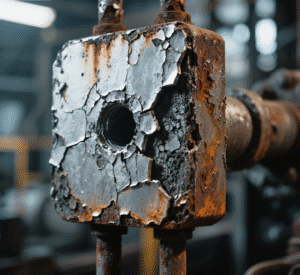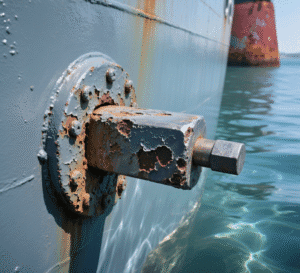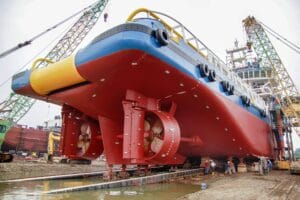Introduction: Titanium production faces critical environmental and regulatory challenges.
Titanium ingot production is essential for industries like aerospace, medical devices, and energy. However, this process is not without its challenges, especially when it comes to environmental impact and regulatory compliance. Titanium’s high melting point and reactive nature make its extraction and refining energy-intensive, while the production process can result in significant waste and emissions. Stricter global regulations aimed at minimizing environmental harm are adding pressure on manufacturers to innovate and adopt sustainable practices. But what are the key environmental and regulatory challenges affecting titanium ingot production today?
Titanium ingot production is impacted by energy consumption, waste management, and stringent regulatory requirements, all of which demand innovation and sustainable practices.
Let’s explore these challenges in detail and how the industry is addressing them.

How Does Energy Consumption Impact the Environmental Footprint of Titanium Production?
Producing titanium ingots is an energy-intensive process, beginning with the extraction of titanium from its ores, such as ilmenite or rutile, and continuing through the melting and refining stages.
• High Energy Requirements: Titanium extraction involves the Kroll process, which requires significant energy to convert titanium ore into titanium sponge. This process, followed by melting and refining to produce ingots, contributes heavily to the carbon footprint of titanium production. For example, the energy intensity of titanium production is estimated to be several times higher than that of steel or aluminum.
• Greenhouse Gas Emissions: The energy-intensive nature of the process often relies on fossil fuels, leading to substantial CO2 emissions. In regions with carbon-intensive power grids, titanium production can have a significant environmental impact.
Energy consumption and greenhouse gas emissions are major challenges in titanium ingot production, requiring more energy-efficient and sustainable technologies.
How Do Waste and Byproducts Create Environmental Challenges?
Titanium production generates waste and byproducts that can have negative environmental consequences if not managed properly.
• Slag and Waste from Ore Processing: The separation of titanium from its ores generates large quantities of waste, such as slag. Improper disposal of this waste can lead to soil and water contamination. Additionally, managing this slag is a logistical and regulatory challenge for manufacturers.
• Scrap and Material Loss: During the melting and refining stages, titanium production can lead to significant material loss in the form of scrap. Recycling scrap is possible but energy-intensive, adding further complexity to waste management efforts.
Waste from titanium production poses environmental challenges, requiring proper disposal, recycling, and waste reduction strategies.
What Regulatory Challenges Are Impacting Titanium Ingot Production?
Global regulatory frameworks are becoming increasingly stringent, particularly as governments and industries prioritize sustainability and environmental responsibility.
• Carbon Emissions Regulations: Many countries have introduced strict carbon emission standards, such as those outlined in the Paris Agreement. Titanium producers are under pressure to reduce emissions during the energy-intensive extraction and melting processes to comply with these regulations. Non-compliance can lead to fines, sanctions, or loss of market access.
• Waste Disposal and Recycling Mandates: Governments are imposing stricter rules on waste disposal and encouraging recycling to minimize the environmental impact of industrial processes. Titanium producers must invest in sustainable waste management practices to comply with these regulations.
• Workplace Safety and Chemical Handling: Titanium production involves the handling of hazardous chemicals, such as chlorine and magnesium, during the Kroll process. Regulatory bodies like OSHA (Occupational Safety and Health Administration) and REACH (Registration, Evaluation, Authorisation, and Restriction of Chemicals) impose strict guidelines on the handling, storage, and disposal of these chemicals.
Regulations on emissions, waste, and workplace safety are driving titanium producers to adopt more environmentally friendly and compliant practices.
How Do Supply Chain Challenges Impact Titanium Production?
Environmental and geopolitical factors also affect the availability of raw materials and the overall titanium production supply chain.
• Raw Material Scarcity: Titanium is primarily extracted from ilmenite and rutile, which are geographically concentrated in a few regions, such as Australia, South Africa, and Canada. Disruptions in the supply chain, such as mining restrictions or export bans, can affect the availability and cost of raw materials.
• Ethical and Sustainable Mining: Increasing scrutiny of mining practices means titanium producers must ensure their raw materials are sourced ethically and sustainably. For example, mining operations must minimize habitat destruction and water pollution to comply with environmental regulations and maintain social licenses to operate.
Supply chain disruptions and sustainability concerns in mining add complexity to titanium ingot production.

What Role Does Recycling Play in Reducing Environmental Challenges?
Recycling titanium scrap presents an opportunity to reduce the environmental impact of titanium production, but it also poses challenges.
• Recycling Processes: Titanium scrap can be recycled to produce new ingots, reducing the need for raw ore extraction. However, recycling titanium is an energy-intensive process that involves sorting, cleaning, and remelting scrap materials, which can offset some of the environmental benefits.
• Closed-Loop Systems: Implementing closed-loop recycling systems can help reduce waste and improve material efficiency. However, the high cost of these systems and the need for advanced technologies can be a barrier for many producers.
Recycling reduces the reliance on raw materials and minimizes waste, but it requires significant investment in technology and infrastructure.
How Is the Industry Addressing These Challenges?
The titanium industry is investing in innovative technologies and practices to mitigate environmental and regulatory challenges.
• Adoption of Green Energy: Some titanium producers are transitioning to renewable energy sources, such as solar and wind, to power their operations. This shift reduces the carbon footprint of titanium production and aligns with global emissions reduction targets.
• Innovative Processing Techniques: Advanced melting techniques, such as plasma arc melting and electron beam melting, offer more energy-efficient and cleaner alternatives to traditional methods. These technologies also reduce waste and improve material utilization.
• Sustainable Mining Practices: To address raw material sourcing concerns, mining companies are adopting sustainable practices, such as reducing water usage, restoring habitats, and minimizing emissions during extraction.
The titanium industry is actively exploring greener energy sources, advanced technologies, and sustainable practices to overcome environmental and regulatory challenges.
Claim: Environmental and Regulatory Challenges Drive Innovation in Titanium Production
Titanium ingot production faces significant challenges from energy consumption, waste management, and strict regulations. However, these challenges are also spurring innovation in sustainable technologies and practices, paving the way for a more environmentally responsible industry.
Conclusion: Overcoming Challenges Through Innovation and Sustainability
In my view, the environmental and regulatory challenges surrounding titanium ingot production are driving much-needed advancements in the industry. From improving energy efficiency to adopting sustainable mining practices, manufacturers are finding innovative ways to reduce their environmental impact while meeting regulatory requirements. By embracing these changes, the titanium industry is not only addressing its current challenges but also positioning itself for a more sustainable and competitive future.







2 Responses
I got this web site from my pal who shared with me on the
topic of this website and now this time I am browsing
this web site and reading very informative articles at this time.
Thanks for your sharing, wish some can help you.